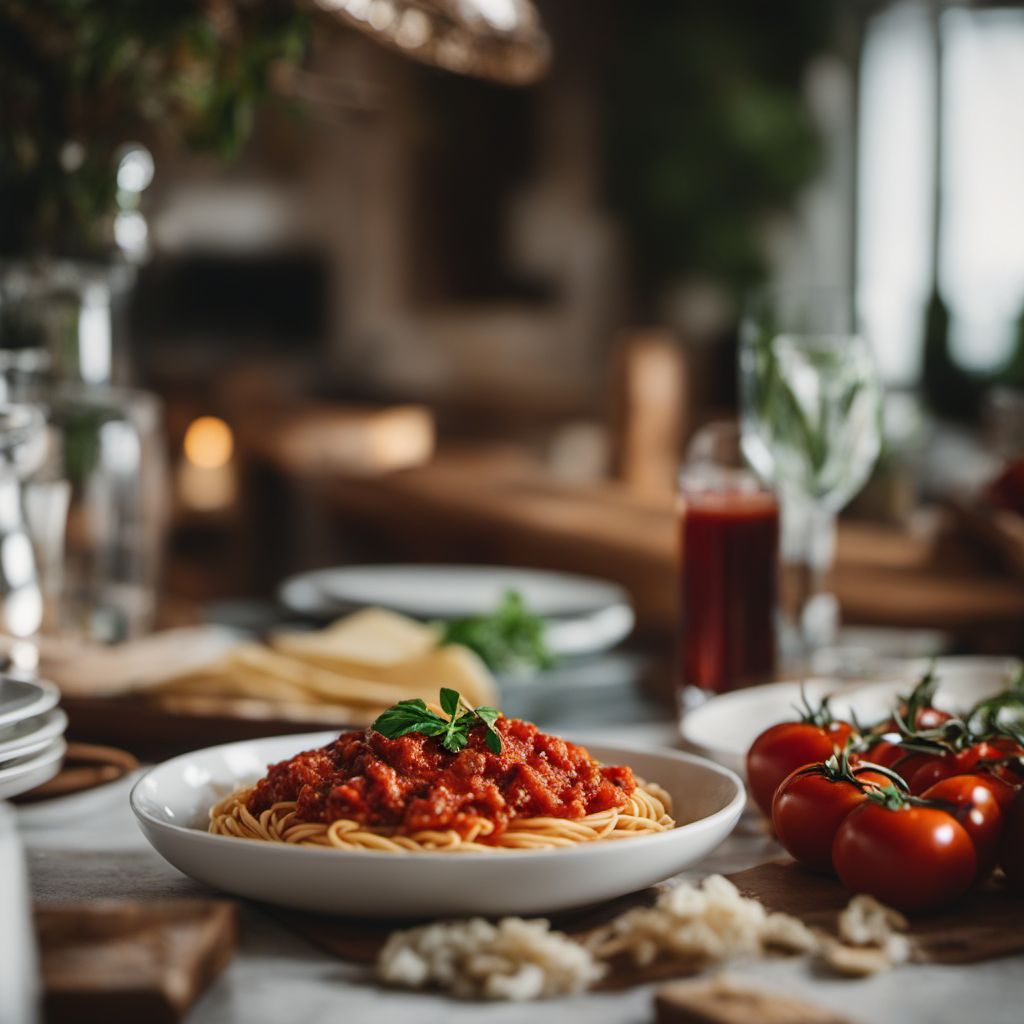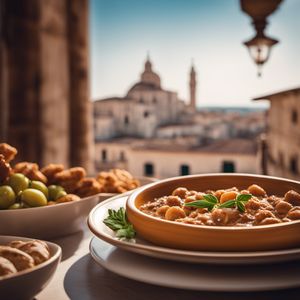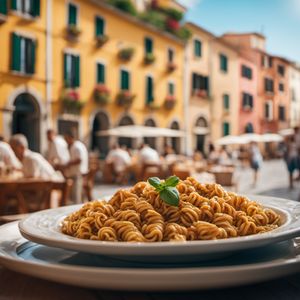
Dish
Pomarola
Pomarola is typically made by sautéing garlic in olive oil until it is golden brown, then adding fresh tomatoes and herbs such as basil and oregano. The sauce is then simmered until it is thick and flavorful. Pomarola is a versatile sauce that can be used in a variety of pasta dishes.
Origins and history
Pomarola originated in Italy and is a staple in Italian cuisine. It is believed to have been created by farmers who used fresh ingredients from their gardens to create a simple and flavorful sauce. Today, Pomarola is enjoyed throughout Italy and is a popular sauce for pasta dishes.
Dietary considerations
Pomarola is suitable for gluten-free and vegan diets. However, it contains garlic, which may not be suitable for individuals with garlic allergies or sensitivities.
Variations
Variations of Pomarola may include additional ingredients such as onions, chilies, or cheese. Some recipes may also call for the sauce to be blended into a smooth paste.
Presentation and garnishing
To make the best Pomarola, use high-quality fresh tomatoes and herbs. Be sure to simmer the sauce until it is thick and flavorful, and add plenty of garlic and olive oil for flavor. Garnish with a sprig of fresh herbs or a sprinkle of parmesan cheese for added flavor and visual appeal.
Tips & Tricks
For a smoother sauce, blend the Pomarola in a food processor or blender. If the sauce is too thick, add a little bit of water or vegetable broth to thin it out.
Side-dishes
Pomarola pairs well with a variety of pasta dishes, including spaghetti, penne, and lasagna. It can also be served as a dipping sauce for bread or as a topping for pizza.
Drink pairings
Pomarola pairs well with red wine, such as Chianti or Sangiovese. It can also be served with a light beer or a sparkling water with lemon.
Delicious Pomarola recipes
More dishes from this category... Browse all »

Agliata
Italian cuisine

Agrodolce
Italian cuisine

Ajilimójili
Mexican cuisine

Allemande sauce
French cuisine

Almogrote
Canarian cuisine

Ammoghiu
Italian cuisine

Apple Sauce
American cuisine

Awaze Sauce
Ethiopian cuisine
More cuisines from this region... Browse all »

Abruzzese and Molisan cuisine
Savory, Earthy, Rustic, Hearty

Apulian cuisine
Fresh, Savory, Rustic, Simple

Arbëreshë cuisine
Savory, Tangy, Herbaceous, Spicy

Basilicatan (Lucanian) cuisine
Savory, Earthy, Rustic, Hearty

Ligurian cuisine
Light, Delicate, Herbaceous, Salty

Lombard cuisine
Rich, Savory, Meaty, Cheesy

Neapolitan cuisine
Bold, Savory, Spicy, Tangy, Fresh

Roman cuisine
Fresh, Light, Herbaceous, Tangy, Savory

